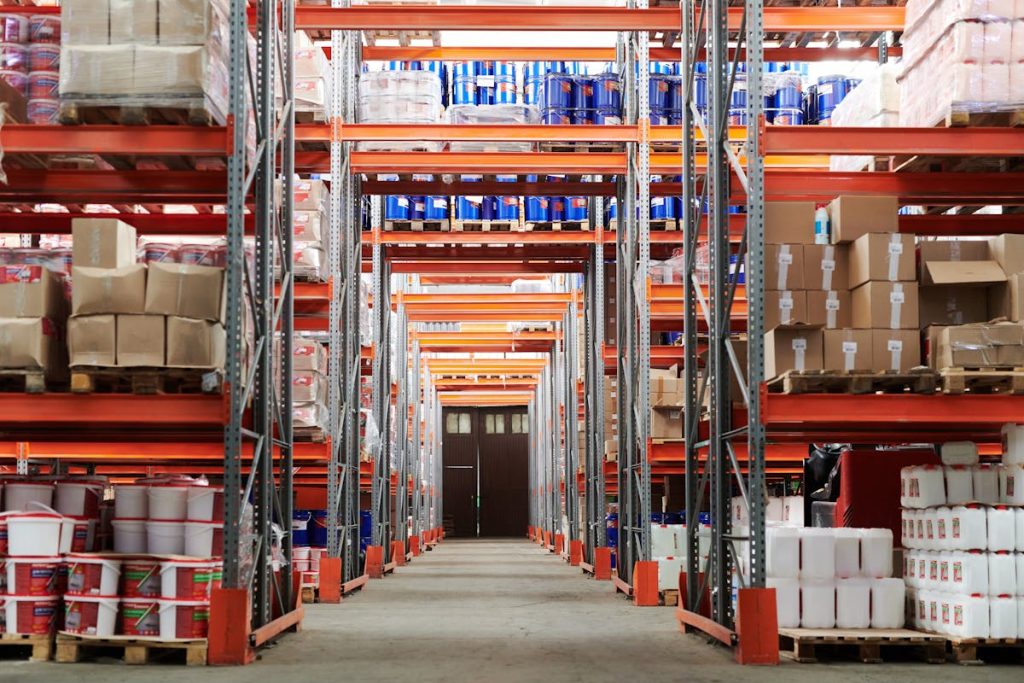Disclaimer: Quick Jobs. This site provides business content for informational purposes only.
- Warehouse managers should conduct a sustainability audit and invest in advanced security measures, employee training, and continuous improvement to prepare for the future.
- Staying informed about developments in warehouse technology and collaborating with others can also help warehouses adapt to changing industry demands.
- The warehouses of 2024 will be highly efficient, technologically advanced, and sustainable operations that are integral to meeting the demands of the modern supply chain.
- Strategic investments in automation, advanced warehouse management systems, and employee development can ensure warehouses are well-prepared for future challenges and opportunities.
The warehousing landscape is radically transforming, powered by technological advancements and shifts in the global supply chain. The rise of e-commerce, changing consumer demands for faster deliveries, and an increased focus on sustainability are driving warehouses to evolve. Adapting to these changes is not just beneficial but essential to remain competitive and efficient in this new era.
Adapting to Modern Warehousing Demands
The demands placed on warehouses today vastly differ from what they were even a decade ago. The exponential growth of e-commerce has necessitated a shift towards more efficient, technology-driven operations to keep up with the pace of online orders and expectations for rapid delivery. Meanwhile, there is a strong push towards adopting practices that reflect a commitment to sustainability. Warehouses are no longer just storage spaces; they are dynamic, critical nodes in the supply chain that require innovative approaches to meet today’s and tomorrow’s challenges.
What Warehouses Need in 2024
To thrive in 2024 and beyond, warehouses need to incorporate a mix of advanced technologies, employee development strategies, and sustainable practices. Here’s a closer look at the essentials:
Advanced Automation Systems
Integrating robotics and automated storage and retrieval systems (AS/RS) in warehousing operations can significantly enhance efficiency and accuracy while reducing labor-intensive tasks. These systems streamline picking, packing, and sorting processes, allowing warehouses to handle larger volumes of goods with greater precision and less human error.

Robust Warehouse Management Software (WMS)
Next-generation WMS will be at the heart of successful warehouse operations, offering capabilities far beyond traditional inventory management. These systems must integrate seamlessly with other business management tools, providing real-time data analytics, predictive maintenance alerts, and autonomous decision-making abilities to optimize warehouse operations dynamically.
Sustainable Practices and Equipment
Sustainability is no longer a nice-to-have; it’s a must. This includes implementing energy-efficient solutions, such as LED lighting and solar panels, and transitioning to electric or hybrid forklifts to minimize carbon emissions.
Also, among all the equipment used in warehouses, forklifts account for a significant portion of energy usage. Therefore, investing in a forklift for sale in 2024 that runs on sustainable energy sources, such as electricity or hydrogen fuel cells, would be a wise decision for warehouse owners.
Enhanced Security Systems
Protection of assets and ensuring the safety of workers are paramount. Advanced security systems utilizing CCTV, access control, and IoT sensors can safeguard against theft, unauthorized access, and accidents within the warehouse, creating a safer environment for employees and goods alike. Keeping up with the latest security technologies, such as biometric verification and facial recognition, can also enhance the overall security of the warehouse.

Employee Training and Development Programs
As warehouses adopt new technologies, the workforce must evolve alongside them. Investing in continuous training and development programs ensures employees are proficient in the latest warehouse technologies and best practices. This not only boosts operational efficiency but also enhances job satisfaction and retention among staff.
For instance, training employees on operating automated guided vehicles (AGVs) or autonomous mobile robots (AMRs) can improve warehouse productivity and decrease the risk of human error. Additionally, providing opportunities for career growth and upskilling can motivate employees to perform at their best.
Preparing for the Future of Warehousing
Warehouse managers should begin by evaluating their current operations against these emerging trends and requirements. Identifying gaps early allows for strategic planning and phased implementation of new technologies, training programs, and sustainability initiatives. Preparation today will pave the way for a successful, competitive warehouse of tomorrow.
Here are some actions that warehouse managers can take to prepare for the future:
- Conduct a sustainability audit to identify areas for improvement and create an action plan.
- Evaluate current security systems and consider implementing advanced technologies for enhanced protection.
- Invest in employee training and development programs, including cross-training on new equipment and processes.
- Stay informed about developments in warehouse technology, such as automation, robotics, and AI, and assess their potential impact on current operations.
- Foster a culture of continuous improvement and innovation within the warehouse to adapt to changing industry demands.
The Bottom Line
The warehouses of 2024 will be more than just storage facilities; they will be highly efficient, technologically advanced, and sustainable operations that are integral to meeting the demands of the modern supply chain. By adopting advanced automation, sophisticated WMS, sustainable practices, enhanced security, and focusing on employee development, warehouse operators can ensure they are well-prepared for the challenges and opportunities the future holds. Now is the time for warehouse operators to assess their capabilities and make strategic investments in the future.
